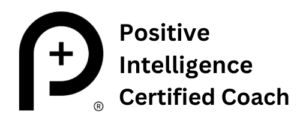Crickets still have the main concert stage as I slip out into the awakening morning with my camera bag. Normally I would head towards the lake at this hour of the day to soak in the sounds of nature before boat engines start, maybe catch a glimpse of the great blue heron or the beaver family at the end of the cove. This morning, though, I have a specific intention that takes me in another direction.

This beauty had caught my eye the day before, its magnificence illuminated by the first sun rays of the day spilling over the tree tops. Built high in the boat house rafters, the wise architect / developer knew the power of location, location, location, not only for food trapping but also to keep curious photographers at a distance.
A quick Google search of “how to photograph spider webs” gives you the basics:
- shoot early in the morning if you want to catch dew drops;
- use a macro lens and a shallow depth of field to keep the background blurry;
- reduce camera shake by using a tripod and a remote shutter release.
After these basics (which apply to macro photography in general), it’s all about the photographer’s eye. The photographer’s eye is all about presence. Presence is a trainable skill that we can practice with intention.
My intention this morning is to be present with spider webs — spider webs with whom I can get up close and personal. So instead of heading down the hill to the lake as has been my habit while vacationing here for the past 25+ years, I head up the hill to a nearby meadow.

Even on the short walk, I can feel my brain clutter dispersing. Newspaper headlines, social media posts, and personal thoughts about racial injustice and COVID-19 are replaced by present moment-based sensory inputs: the sight of a pristine daisy amidst a crowd of decaying neighbors, the shifting temperature as night transitions to day, birdsong gaining momentum to eventually push the crickets’ symphony to the background.
I take in all of these experiences with open awareness, feeling more and more at one with my surroundings. I notice the pull of wild flowers calling out, “Stop and take my picture!” I note the distraction and return my attention to my intended focal point. The magic of early morning sunlight is fleeting and I want to save it for the spider webs.
I reach the field and set up my tripod. Yes, that yellow mug is my coffee. My journal is part of this process as well.

It doesn’t take long before a glistening rainbow catches my eye.

Presence — the ability to stay connected at the sensory level to what’s happening in real time — makes or breaks a photographer’s ability to capture subtle variations of light and form. In mindfulness meditation we practice focused attention and open awareness, skills that serve especially well for etherial subjects like spider webs.

Choices need to be made about where to place attention. Should we take a wide view of the entire complex structure — the full interconnectedness of the system, or should we focus in on the tiny details that contribute to the whole?

As is the case during formal meditation, thoughts and feelings come and go even while attention is anchored. Even here in this field with my camera trained on morning dew drops on spider webs, #blacklivesmatter floats through my consciousness. The complex network of spider web strands serves both as bridges and bars (bridges if you’re the web builder, bars if you’re the insect on the dinner menu).

I get carried away by the bridges vs. bars symbolism, having recently learned that the Federal Housing Administration specifically barred African Americans from purchasing or renting homes in FHA-financed suburban developments. And how our banking system serves as bridges for Whites and bars to advancement for Blacks, who are routinely denied access to credit.
I feel a tightening in my chest when these thoughts float through–the manifestation of stress, injustice, and anger at the false advertising of “home of the free” on this July 4th holiday weekend. I note the feelings and return my attention to the web I’ve chosen for my focal point. Re-centered in the present moment, my body settles.

Some webs are neat, tidy, symmetrical, pleasing to the eye — how we think spider webs “should” look. Others are messy and disorganized, seemingly not interesting, “beautiful,” or “correct.” (Can you spot the spider living in this “hovel”?)
But take a closer look. Maybe you’re not approaching it from the right angel. Maybe you need to get down underneath the structure to discover a whole world you were missing.

And maybe with that extra effort you can finally get close enough to take in the miracle of this individual spider who has managed to stay alive despite the odds. Despite the constant threat of predators (birds, wasps, lizards, frogs, human feet and tractors rolling through meadows like this one — not to mention the fear and “kill it!” trigger most humans experience at the mere IDEA of a spider), this spider is still here.

Whatever way we choose to meditate, we wake up a little more. Staying awake, deepening our understanding, requires continued practice. From that place of conscious awareness, compassion, courage, and resilience grow. We become empowered change agents — first transforming ourselves (the single dew drop), then transforming each web strand by strand, and eventually the system as a whole web by web by web.


